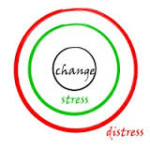Mindfulness and the Military

It seems like mindfulness is being applied to almost every sector of society. That, of course is a good thing. One sector that has me scratching my head is the military. The military is composed of people, so from that standpoint it makes pefect sense to initiate mindfulness training to the broad spectrum of positions in the military. The same qualities valued by everyone is to be valued in the military….focus, resilience, stress reduction, communication skills, organizational ability and so forth.
There are other skills that are very valuable to many in the military but need to be looked at carefully, especially for soldiers in combat and less so for all other support people. Skills such as the ability to let go, fearlessness, non judging and acceptance can be problematic when faced with the need to kill other people directly as a soldier or indirectly as a support person. Mindfulness stripped of its moral and ethical roots becomes something else altogether. Those moral and ethical roots consist of qualities such as compassion, kindness, interconnectedness, forgiveness, love and gratitude. An example of this contradiction took place during WW 2 when the Japanese forced Buddhist monks to provide mindfulness training to Kamikaze pilots. Letting go, fearlessness, non judging and acceptance are ideal qualities for a Kamikaze pilot who is preparing to kill others in addition to oneself. What would have happened had the monks also included compassion, kindness, interconnectedness, empathy, sympathy, forgiveness, love and gratitude as part of the training? I suspect those qualities were not included in the training therefore stripping away the moral and ethical backing. The result was to make very efficient killers of the Kamikazes. Years later the Buddhist monks formally apologized for providing the training but who can blame them when death would have been the result of refusal. Perhaps there can be a moral and ethical rationale for killing, an argument that has been debated forever. On the other hand, if you ask people like Gandhi, Martin Luther King and the countless of other proponents of non violence…there are no exceptions.
So here we are once again in a position where a moral and ethically backed system of development is being employed to make killing more efficient and effective. I’m not training the military so I don’t know what approach is being used but I do see the potential for inner conflict. There are some pretty big questions coming up with this. Old questions about war, killing and destruction are being considered once again in a familiar context. Certain mindfulness skills are very useful in this situation as we’ve seen over the centuries, but what about the moral and ethical underpinning? It really creates an opportunity to re evaluate who we are and where we are going as a society.
Mindfulness and the Military Read More »









